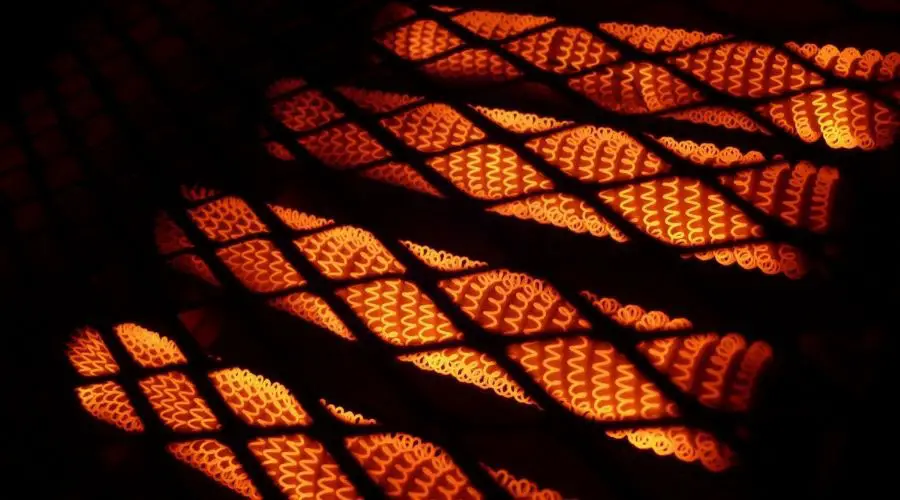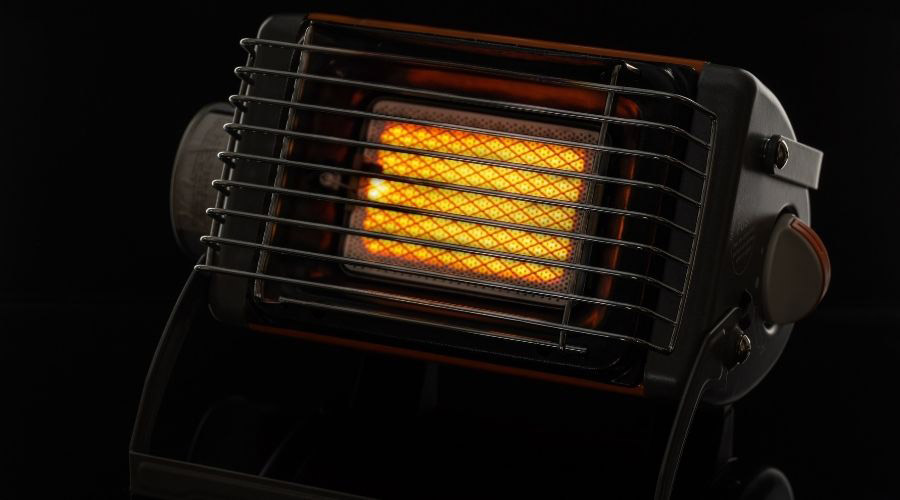
When the cold winter air starts to creep up on you, it is time to get your heater out. However, you just moved up north from somewhere that was relatively hot and unsure where to start.
Ceramic heaters are a viable option because they have a cool-touch exterior and are relatively safe to put all over your home, especially in bedrooms and offices with more of an enclosure.
So you may be wondering if a ceramic heater uses a lot of electricity or not.
A ceramic space heater will generally cost you about 0.18 cents an hour and 0.12 cents per kWh. Using your heater for 8 hours daily would be a rough estimate of $2.16 a day or just above $66 a month to operate.
However, some ceramic heaters come with an auto shut-off button and/or an ECO setting, saving you more money in the long run.
In this article, we will compare rates on which wattage would best suit your needs and whether they truly are energy-efficient. We are reviewing different ways to save on your electricity bill and some of the best ceramic space heaters. Keep reading so we can get started in the learning process!
Does A Ceramic Heater Use Much Electricity?
As mentioned above, ceramic heaters do not use a lot of electricity. Still, either way, you will pay more during the wintertime than you would any other month (aside from mid-summer) because of how hard your thermostat will work during those months.
However, according to The Missouri Department of Natural Resources (DNR) website, they tell us that if you turn your central heating down a few degrees and use a space heater in a small area, you will more than likely save money.
But, if the thermostat is cranked up while your space heater is on also, then odds are, your electricity bill will not save you more money.
A space heater is supposed to supplement heat in the home and not add even more to it. Before you crank your thermostat up to 80 degrees during the winter months, this is something to keep in mind.
Indeed, if you use a space heater, you can get away with going from 65-70 degrees all winter instead of keeping it extremely hot.
Most ceramic space heaters that use roughly 1500 watts will cost you about 0.18 cents per hour, at 0.12 cents per kWh. The cost would be on your electric bill, depending on how long you want to use your heater throughout the day.
If you wanted the heater for 8 hours, then 8 x 0.18 = $2.16 per day. Times 2.16 by 30 days (or a month) would give you roughly $65.75 per month.
If you were to ask yourself if these heaters are expensive to run, this shows that these radiators will relatively cost extra on your electricity bill.
It is important to ensure you budget out this amount if you are not already on a budget billing plan that your electric company provides.
Is A Ceramic Heater Energy-Efficient?
Ceramic heaters are relatively small and compact, allowing them to be transferred from room to room. They will use less energy than other space heaters like infrared or oil-filled radiators.
However, because ceramic heaters are more suited for smaller spaces, such as your bedroom or office, they will overall be more energy-efficient.
Not only that, but these heaters are an excellent choice for baseboard heating, a stove, or a fireplace that is considered for bigger rooms.
One of the many things to contemplate when looking for the best ceramic heater is looking for ones with three settings: ECO, Low and High.
These settings serve a different purpose regarding how warm your area will be. Having an eco-friendly mode means that you will be saving energy regardless of what is happening around you.
The ECO mode increases and decreases the wattage as the temperature rises and drops within your home, so you would not have to worry about turning it high and low if this is the case.
Are These Heaters Safe To Use?
Ceramic heaters are very safe to use within your home. This is mainly because ceramic elements will not overheat and remain cool to the touch. Because these radiators have a more controlled exterior, they will decrease the likelihood of burns or accidental fires.
Many ceramic heaters even have an automatic shut-off feature that helps for many reasons: it prevents overheating and saves energy and money. As we have learned, ceramic heaters are incredible energy savers and are less expensive than other brands, especially if you have a smaller area to heat up.
Rate Comparison Per Wattage Power
So, there are many ways you can tell what the rate comparison is per wattage power. Down below, we have created a charge of comparison and contrast. This is so you can find the best heating power and heater that suits your needs.
The chart below is based on 6 hours from an electricity rate of 10.5 cents per kWh an hour. Assuming that you are not going to use it all day due to not being home or when it is hottest, these are the average numbers of what you can expect per hour, day, and month.
| POWER RATING | PER HOUR | PER DAY | PER 30 DAYS |
|---|---|---|---|
| 500 watts | 5.25 cents (500 W) | $0.32 (3 kWh) | $9.6 (90 kWh) |
| 800 watts | 8.4 cents (800 W) | $0.50 (4.8 kWh) | $15 (144 kWh) |
| 1000 watts (1 kW) | 10.5 cents (1000 W) | $0.63 (6 kWh) | $18.9 (180 kWh) |
| 1200 watts (1.5 kW) | 12.6 cents (1200 W) | $0.76 (7.2 kWh) | $22.8 (216 kWh) |
| 1500 watts (1.5 kW) | 15.75 cents (1500 W) | $0.94 (9 kWh) | $28.2 (270 kWh) |
| 2000 watts (2 kW) | 21 cents (2000 W) | $1.26 (12 kWh) | $37.8 (360 kWh) |
| 2500 watts (2.5 kW) | 26.25 cents (2500 W) | $1.57 (15 kWh) | $47.1 (450 kWh) |
| 3000 watts (3 kW) | 31.5 cents (3000 W) | $1.89 (18 kWh) | $56.7 (540 kWh) |
Other Ways To Save Energy During The Winter
Although having a space heater can be less costly than having your centralized heating run all winter long, it is always important to know other ways to save on energy, especially if you live in an older space or home. Here are some quick and practical tips to save on your energy bill today.
1. Replace Air Filters
Taking care of your air filters at least once a month or every other month is an excellent way to save on costs. Dirty filters will cause a blockage in your heating system, making it work harder than it should. This also allows proper air to flow through thoroughly.
2. Find Leaks, Then Seal Them Off
Cold air leakage from cracks within the home may cause your home to be colder than it should be, and it will let hot air out of the house. Check all doorways and windows, then seal any gaps you see with caulk or weather stripping for better insulation.
3. Use A Programmable Thermostat
Set your thermostat as low as you are comfortable during the cold weather. Reducing the heat by a few degrees while you sleep or are not home will help you save money.
Some thermostats even allow you to raise the temperature while you are away on your phone instead of waiting until getting home and remaining in the cold for 30 minutes to an hour.
You can do this right before coming home from work or wherever you are.
4. Check The Heater’s Efficiency
If you notice that the heating system needs repairs frequently, it would be wise to invest in a better heating operation that works better. Not only will it be hassle-free, but you will not be investing so much in trying to fix it.
5. Use Energy-efficient Holiday Lights
One of the many ways electric bills go up during the winter is through holiday light displays. Choosing something with fewer wattages, such as LED lighting, would be wise. You can also place a timer on these lights to ensure you will use less electricity.
6. Keep Your Fireplace Closed If Not In Use
If you have a fireplace, keep the damper closed when not in use. Close the doors that lead into the room when a fire is kindled, and lower the thermostat temperature. If you never use it, seal the entire thing.
7. Cover Drafty Windows
As mentioned before, if your home is older, especially the windows, you might notice a slight draft here and there. Cover these up with plastic sheets or use a towel to cover up the cracks on the bottom. You can also use cardboard for better insulation.
It would be wise to consider investing in new windows if you live in a home where you are not planning on moving again anytime soon.
8. Use The Sun To Your Advantage
Opening your windows facing south throughout the day will allow your home to heat up naturally. It is good to note that you must close the curtains at nighttime to protect your home from losing that heat.
9. Consider Ductless Mini-split Heating Systems
If you notice an uneven warmth from around your home, this will allow you to control the temperature in each room. This system is straightforward to install and is very energy-efficient.
For more on mini split systems, see Best Ductless Mini Split Brands & Buying Guide.
Advantages & Disadvantages Of A Portable Ceramic Heater
Now that we have all of the basics out of the way, you may be wondering what is good about ceramic heaters anyways. There are quite a few reasons you want to purchase a ceramic heater. Let us go through all of them down below.
| PROS | CONS |
|---|---|
| Heats up relatively quickly | Physical objects can hinder heat transmission |
| Lightweight | It does not heat a large area (best for smaller sized rooms) |
| Extremely mobile | Ceramic heaters that do not have a fan heat a room slowly |
| Heat can oscillate throughout the room | To provide heat, most types must run continuously (and consume electrical energy) |
| Compact in size, which is convenient for being within the rooms | |
| Move it around quickly if need be | |
| Because it is ceramic, the heat will take more time to cool off (heat will radiate after being turned off) | |
| Housing that is cool to the touch | |
| Some ceramic heaters come with a wireless thermostat. |

Best Products To Meet Your Needs
After going through the ins and outs of how much it costs to run a ceramic heater, how to get the most out of them, and the safest methods to use them, you may wonder which one will fit your needs entirely.
This portion will briefly examine getting the best bang for your buck (if that is your concern) or which product might fulfill your aesthetic needs!
Conclusion
We have already proven that ceramic space heaters are relatively energy-efficient. Saving money on energy costs will depend on how you set your thermostat and if your house is adequately insulated.
Using this article as a guide to better your household’s energy will ensure that you do everything possible to cut down costs from November to March.









